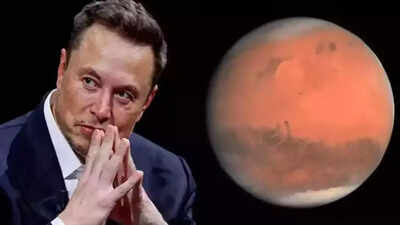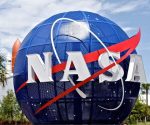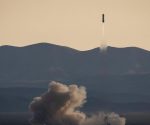Elon Musk’s Mars Mission: Why humanity’s future may depend on the ‘red planet’ | – The Times of India

Elon Musk, the billionaire innovator and founder of SpaceX, is captivating the world—not with cars or satellites, but with a bold promise: making humanity a multiplanetary species. While many dismiss the idea of colonizing Mars as science fiction, Musk treats it as a moral imperative. His rationale is not about escaping Earth, but about ensuring the long-term survival of civilization. From natural disasters and pandemics to nuclear conflict and artificial intelligence gone rogue, the threats to life on Earth are numerous.In response, Musk offers an audacious alternative—build a backup civilization on Mars. And he’s not just theorizing; he’s actively building the rockets, testing the technologies, and even laying the groundwork for a Martian-bound community. With SpaceX’s Starship entering new phases of testing and Starbase evolving into more than just a launch site, the dream is accelerating into a structured, executable plan. In Musk’s world, Mars is no longer just a dot in the night sky—it’s the next frontier for humanity’s legacy.
Elon Musk says Earth isn’t enough: Mars is humanity’s backup
Musk argues that placing all of humanity’s eggs in one planetary basket is a catastrophic risk. “The fundamental fork in the road for human destiny is where Mars can continue to grow even if the supply ships from Earth stop coming,” he said during a recent event at SpaceX’s Starbase facility in Boca Chica, Texas. His point: true resilience comes from self-sufficiency—and that must include life beyond Earth.Mars, despite its harsh environment, offers the best shot for long-term off-world habitation. It has water in the form of ice, manageable gravity (about 38% of Earth’s), and a day just over 24 hours. Unlike the Moon, it has an atmosphere—thin and carbon dioxide-rich, but an atmosphere nonetheless, which can potentially support some level of terraforming and agriculture.
Starbase rising: Musk’s city of tomorrow begins now
Starbase isn’t just a SpaceX launch site—it’s the foundation of a future city designed for space colonization. In 2021, Musk revealed plans to incorporate Starbase as its own municipality. Located in South Texas, the area serves as the development and testing grounds for Starship, SpaceX’s fully reusable next-generation rocket that will carry humans and cargo to Mars.With rapid progress in testing and development—including successful high-altitude flight trials and orbital launch rehearsals—Starship is central to Musk’s interplanetary plans. It’s designed to carry over 100 tons of cargo or 100 passengers per flight, with a cost-per-kilogram dramatically lower than any existing launch system. Each launch brings Musk closer to what he calls a “spacefaring civilization.”
Elon Musk’s Mars city: A million strong and self-sustaining
Elon Musk’s ultimate goal is to build a self-sustaining city of a million people on Mars. That means food production, shelter, medical care, power generation, and governance must be handled independently of Earth.Key to this vision is:
- Closed-loop life support systems: These would recycle air, water, and waste to sustain life.
- Solar energy farms: Mars receives enough sunlight for solar panels to generate power for habitats, greenhouses, and rovers.
- Autonomous manufacturing: Building materials, machines, and even tools need to be produced on-site to reduce reliance on Earth resupply missions.
- Robotic labor: AI and robotics will play a crucial role in constructing habitats and performing high-risk tasks in Mars’ thin atmosphere.
Musk has previously stated, “Ideally we can take anyone who wants to go to Mars,” emphasizing that this isn’t just for the elite—it’s about safeguarding the species.
Earth isn’t enough: Why Musk says we need Mars
For Musk, the need to colonize Mars is not about pessimism—it’s about realism. Earth is beautiful, but fragile. Some of the existential risks that could render humanity extinct or civilization unrecognizable include:
- Nuclear war or global conflict
- Runaway artificial intelligence
- Pandemics (natural or engineered)
- Climate catastrophe
- Asteroid impacts
- Supervolcano eruptions
- Solar flares or gamma-ray bursts
While some of these are low-probability events, Musk argues that if any one of them occurs and Earth remains our only home, humanity could vanish. “Being a multi-planet civilization increases the probable lifespan of humanity by orders of magnitude,” he once said.
‘Yes, but not on impact’: Musk’s quirky commitment
In a humorous yet revealing exchange with Donald Trump during a joint appearance earlier this year, Musk was asked if he really wanted to die on Mars. His response? “Yes, but not on impact.”The quote, which quickly went viral, underscores his lifelong commitment to this goal. Musk has frequently stated he’s willing to dedicate the rest of his life—and possibly end it—helping build a thriving Martian settlement.
Obstacles ahead: Gravity, radiation, and governance
Despite the progress, monumental hurdles remain:
- Radiation exposure: Without a magnetic field, Mars offers little protection from cosmic radiation. Surface habitats may need to be built underground or shielded by regolith.
- Launch window constraints: Travel between Earth and Mars is only optimal every 26 months, limiting mission flexibility.
- Communication delays: A signal from Mars to Earth can take 5–20 minutes, complicating remote operations and real-time command.
- Psychological toll: Long-term isolation, confinement, and lack of Earthly amenities could take a serious mental health toll on early colonists.
- Legal gray areas: As outer space law evolves, questions remain over governance, property rights, and sovereignty on Mars.
Terraforming Mars: Still science fiction or next step
While full terraforming may be centuries away, Musk believes small-scale efforts can start sooner. These include:
- Releasing CO₂ from the polar ice caps to slightly thicken the atmosphere.
- Importing ammonia-rich asteroids to introduce nitrogen.
- Deploying mirrors or orbital reflectors to increase surface temperature.
Such strategies remain speculative, but Musk’s approach is iterative—start small, learn fast, and scale quickly.
















